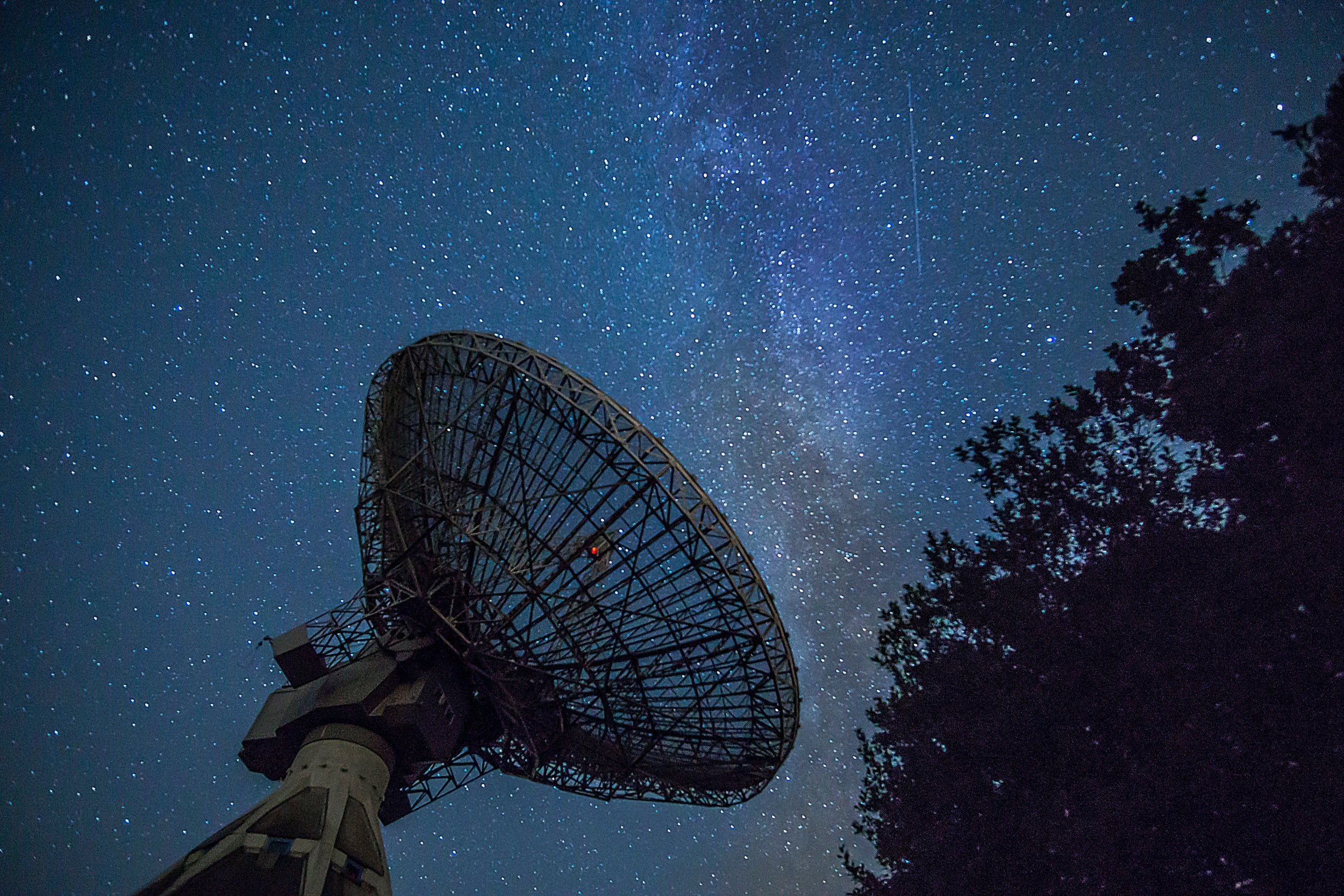Mysteries
The spacetime fabric of the universe is expanding ever-faster, a phenomenon known as cosmic acceleration. We don’t know the exact cause, but there are clues encoded in the large data sets we get when telescopes scan the sky night after night. These data sets are so large and complex, that we need new algorithms and modeling tools to handle it all. Tools like artificial intelligence (AI) have potential to increase our capacity to learn from these data and make new scientific discoveries. But, before we can apply AI, there are some important issues to consider --- like, can it give us error bars that we can interpret?
My research consists of tackling questions in cosmology, AI, and their intersection.
The Cosmic Microwave Background
The cosmic microwave background is the earliest light in the universe. From it, through it, we can learn about the first moments of the cosmos, as well as how structure has formed for the last 13 billion years.
Our mission is to dentify AGN and SZ clusters, and remove gravitational lensing from maps.
Current projects include creating fast simulations of CMB phenomena and propagating deep learning errors through SZ cluster cosmology analysis pipelines.
Recent papers include
DeepSZ: Can we use deep learning to identify and measure galaxy clusters through their Sunyaev-Zel’dovich (SZ) signal?
ArXiv 2102.1323
DeepCMB: Can we use deep learning to separate noise from signal in large CMB maps?
ArXiv 1810.01483
Galaxy Evolution
Galaxies have turbulent, boring, magnificent histories that span hundreds of millions of year. When galaxies merge, it dramatically changes the life of those constituents.
Our mission is to identify and measure galaxy mergers in optical/IR data sets.
Current project: How do noise perturbations affect uncertainties in
Recent papers include
DeepMerge: Classifying High-redshift Merging Galaxies with Deep Neural Networks
ArXiv:2004.11981
DeepMerge II: Building Robust Deep Learning Algorithms for Merging Galaxy Identification Across Domains
ArXiv:2103.01373
Domain adaptation techniques for improved cross-domain study of galaxy mergers
ArXiv:2011.03591
Robustness of deep learning algorithms in astronomy -- galaxy morphology studies
ArXiv:2111.00961
Strong Gravitational Lensing
Strong lenses beautifully display so much of what General Relativity has to tell us about the warping of spacetime.
Our mission is to forecast, classify, and measure strong lenses and estimate parameters of dark matter and dark energy.
Current projects: detecting lensed supernovae and lensed quasars, measuring lenses with simulation-based inference, and forecasing the cosmological power of future lensing systems.
Recent papers include
deeplenstronomy: A dataset simulation package for strong gravitational lensing
ArXiv:2102.02830
Deep Learning in Wide-field Surveys: Fast Analysis of Strong Lenses in Ground-based Cosmic Experiments
ArXiv:1911.06341
Large-scale structure
How does large-scale structure form in the universe? How can we use deep learning to exhaust the information available to us.
Our mission is to use neural networks as tools with which to explore structure formation.
Current projects: studying information content within 3D CNNs
Recent papers include
Deep learning insights into cosmological structure formation
Arxiv:2011.10577
Multi-Messenger Astrophysics
Kilonovae are expensive to simulate! We built conditional Variational Autoencoder to address that: we can now make very fast surrogate models.
KilonovaNet: Coming Soon to an Arxiv Near You
Self-Driving Telescopes
“I contain multitudes!” Large astronomical surveys now administer to multiple competing interests, and we need to explore methods for automating scheduling.
Recent papers include
Unsupervised Resource Allocation with Graph Neural Networks
arXiv:2106.09761
SPOKES: an End-to-End Simulation Facility for Spectroscopic Cosmological Surveys
arXiv:1602.01480
Fundamentals of AI: Uncertainty Quantification
Error bars acquired through deep learning models are not yet physically interpretable. Let’s change that!
Research Funded by:










